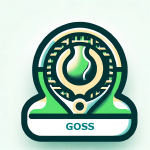When Should I Use a “Tweener” Like Alcaraz?
The Tweener
The “tweener”, made famous by players like Carlos Alcaraz, is more than just a crowd-pleaser—it can be an effective shot when used strategically. But when should you attempt this flashy move, and when should you play it safe? Let’s break down the right moments to use the tweener and how to incorporate it into your game.
Credit: Peter Staples
📌 When to Use a Tweener
The tweener is best utilized in specific game situations where a conventional shot may not be possible.
🔥 1. When You Are Chasing a Deep Lob
✅ Out of Position? No Problem! If you’re sprinting back and don’t have time to turn around, a tweener allows you to stay in the rally.
✅ Avoid an Awkward Backhand Slice—It keeps you balanced while getting the ball back into play.
🔥 2. When a Normal Lob Retrieval Isn’t Possible
💡 If the ball is too deep for a turn-and-hit, a tweener can be a controlled and last-ditch defensive option.
💡 It prevents unnecessary stretching and keeps your footwork under control.
🔥 3. As a Surprise Attack
🎯 Some players, like Carlos Alcaraz, add spin or depth, making the tweener an offensive weapon rather than just a defensive trick.
🎯 Catch opponents off guard, especially if they assume the point is already won.
🔥 4. When You Have Mastered the Shot
✔ If you’ve practiced and can execute it consistently, a tweener can become a functional shot rather than a gimmick.
✔ Use it in high-pressure moments only if you are confident in the execution.
🚫 When NOT to Use a Tweener
While entertaining, the tweener is not always the best option. Here’s when you should avoid it:
❌ When You Have Time for a More Effective Shot
➡ If you can turn and hit a normal shot, take the safer option.
❌ In High-Stakes Moments Without Practice
➡ Risky shot = lost points. If you haven’t practiced enough, don’t gamble with it in crucial moments.
❌ If the Ball is Too Close to Your Feet
➡ Tweener execution requires the right ball height—too low or too high leads to mis-hits.
📈 How to Train the Tweener Effectively
💪 Drill #1: Chase & Drop Drill
🎯 Have a partner throw lobs deep and practice running back into position for a tweener.
💪 Drill #2: Controlled Tweener with Targeting
🎯 Don’t just hit between your legs—aim for specific areas of the opponent’s court.
💪 Drill #3: Timed Reaction Tweener
🎯 Incorporate the tweener into live match play situations so it feels natural rather than forced.
🎾 Wrap
The tweener is an exciting and sometimes game-saving shot when executed correctly. Carlos Alcaraz has redefined its use as both a defensive maneuver and an offensive surprise. However, it should not be overused or relied upon when better options exist.
✅ Practice it regularly to ensure control.
✅ Use it only in the right moments.
✅ Turn it into a real weapon, not just a trick shot!



